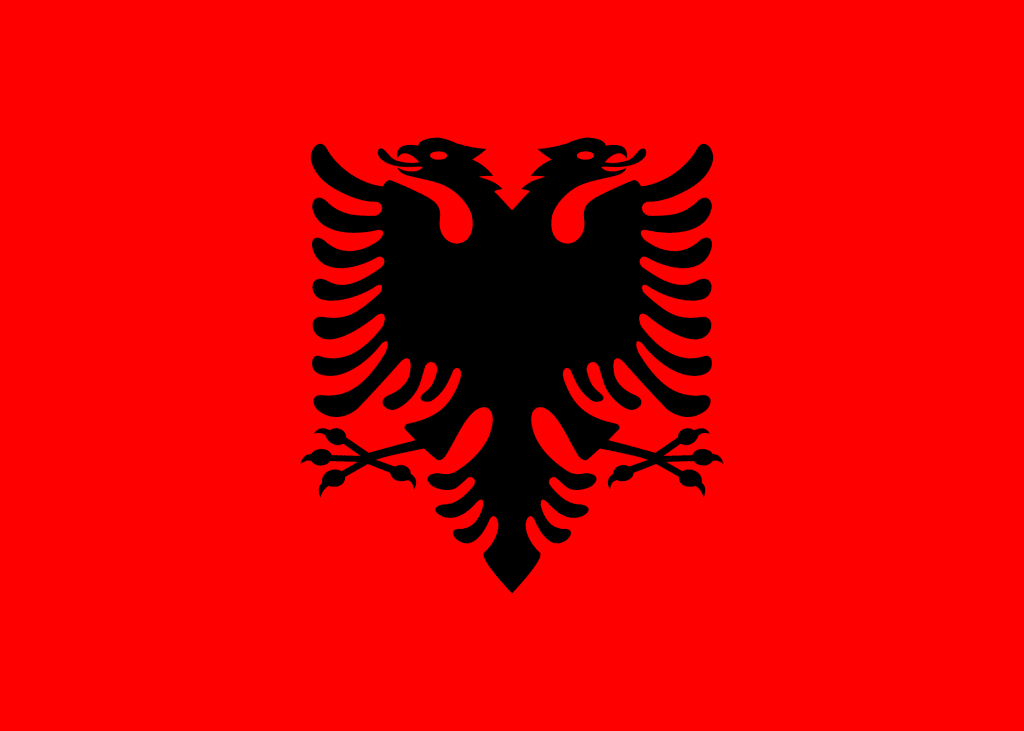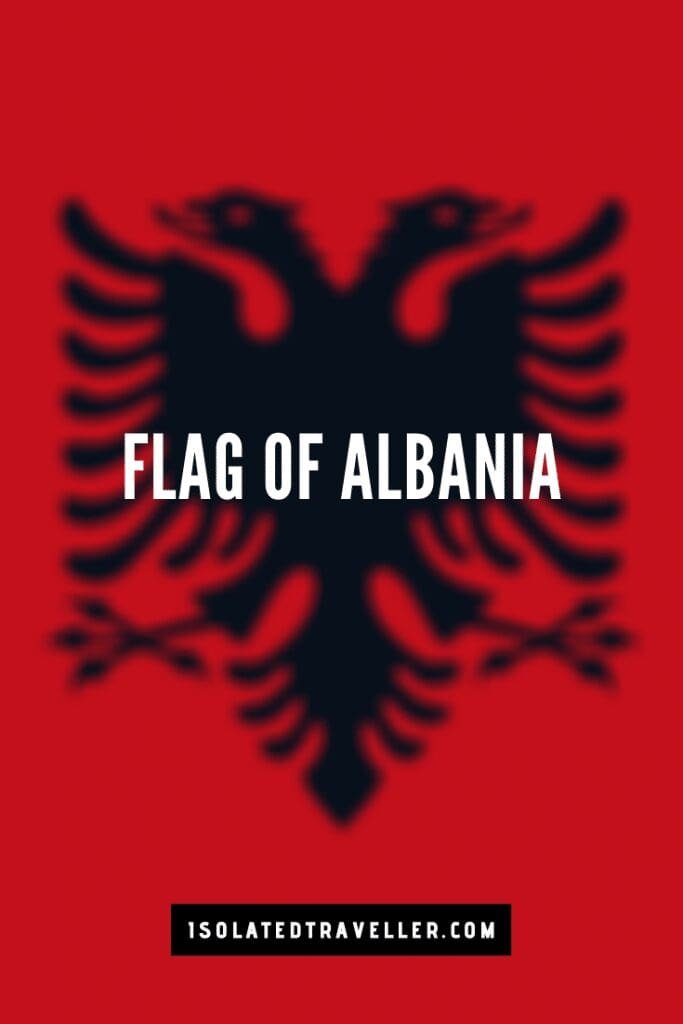Flag of Albania
The Flag of Albania was established as the National flag of Albania during its Independence from the Ottoman Empire in 1912.
The Flag of Albania is a red flag with a silhouetted black double-headed eagle in the centre. The red stands for bravery, strength, valour and bloodshed, while the double-headed eagle represents the sovereign state of Albania.

Flag of Albania Design and Colour Scheme
The Albanian flag is rich in symbolism, representing the country’s history, culture, and national aspirations.
The Flag of Albania consists of two colours red and black and a double-headed Eagle.
- The red stands for bravery, strength, valour and bloodshed.
- The black and the double-headed eagle represent strength, power, and independence.
The aspect ratio of the flag is 5:7, meaning its width is 5 units and its length is 7 units. This ratio ensures that the flag maintains its proper proportions and allows for easy recognition and identification.
History of the Flag of Albania
During medieval times, Albania experienced a period of resistance against the Ottoman Empire under the leadership of George Kastrioti Skanderbeg.
Skanderbeg’s banner, featuring a red background with a black, double-headed eagle in the centre, became a symbol of defiance and national pride.
Skanderbeg’s military successes and his efforts to unite the Albanian people against the Ottoman forces inspired a national awakening. This period of resistance and the symbol of Skanderbeg’s banner laid the foundation for the modern Albanian national flag and its enduring symbolism.
1912, marked a significant milestone in Albanian history with the declaration of independence from the Ottoman Empire.
The newly formed Albanian Provisional Government adopted a national flag known as the “Independent Albania Flag.” This flag featured a red field with a black, double-headed eagle in the centre, similar to Skanderbeg’s banner.
Following the declaration of independence in 1912, Albania entered a period of political turmoil and foreign intervention. The Principality of Albania, established in 1914, saw the adoption of a flag featuring a red field with a double-headed black eagle. This flag represented the royal authority of the ruling prince.
In the late 1920s, Albania transitioned into a constitutional monarchy known as the Kingdom of Albania under King Zog I.
The flag of the Kingdom of Albania featured a red field with a double-headed black eagle and a crown above it. The crown symbolises the monarchy and the authority of the king.
This flag design, with the addition of the crown, represented the royal rule and the unity of the Albanian people under the king’s leadership.
The Kingdom of Albania flags were flown from 1928 until the Italian and German occupations in 1939.
From 1939 to 1943, Albania was occupied by Italy, and the Italian flag flew over the country. After Italy’s surrender in 1943, Germany occupied Albania until 1944.
During this time, the flag of Albania was replaced by occupation flags. These foreign occupations marked a tumultuous period in Albanian history, with the Albanian people longing for independence and the restoration of their national flag.
The communist era in Albania, which lasted from 1944 to 1992, saw the adoption of several flags representing the country’s alignment with the ideology of communism. The flags featured a red field with various symbols, including the red star, which was a prominent emblem of communism.
The current national flag of Albania was adopted on April 7, 1992. It features a solid red field with a black, double-headed eagle in the centre. This flag design marks a return to the historical symbolism and serves as a powerful emblem of Albanian identity and national pride.


